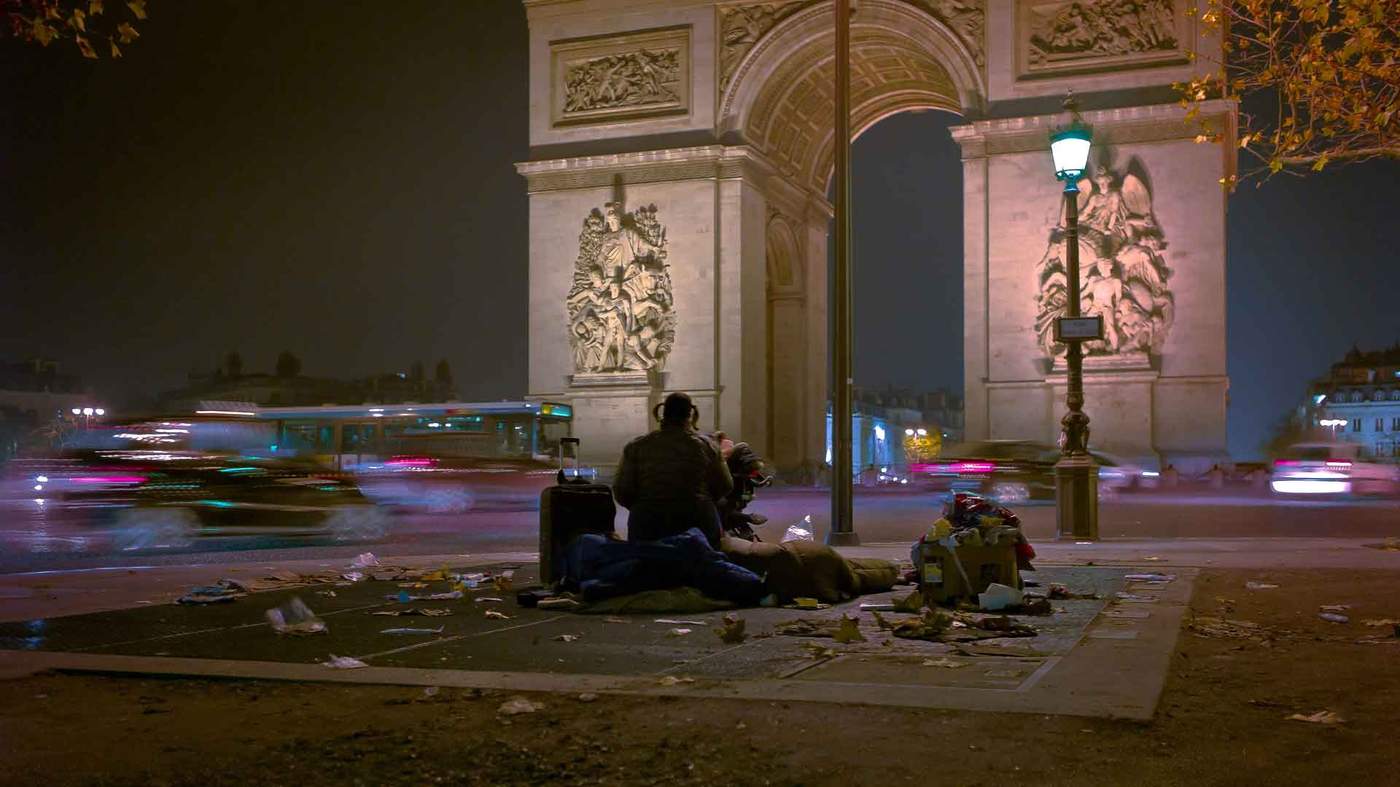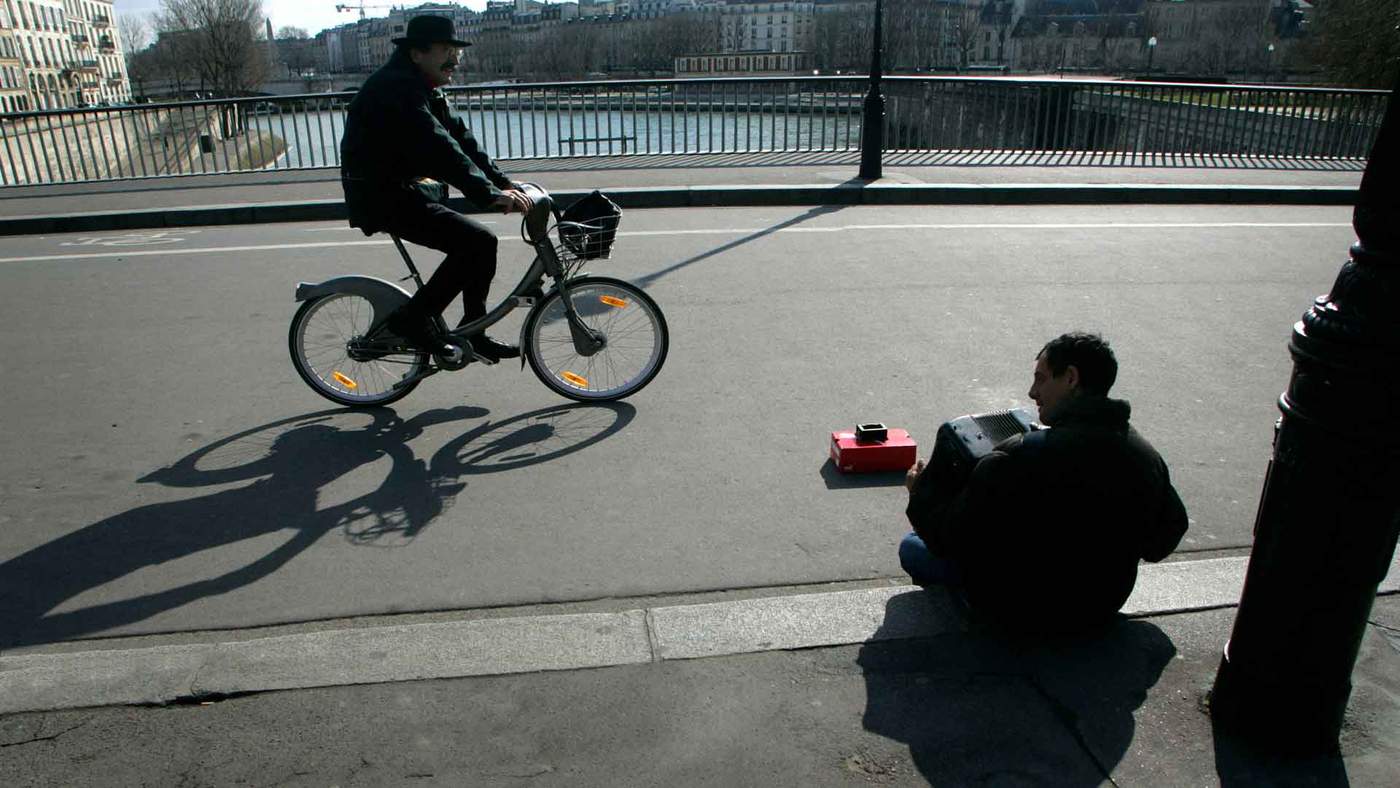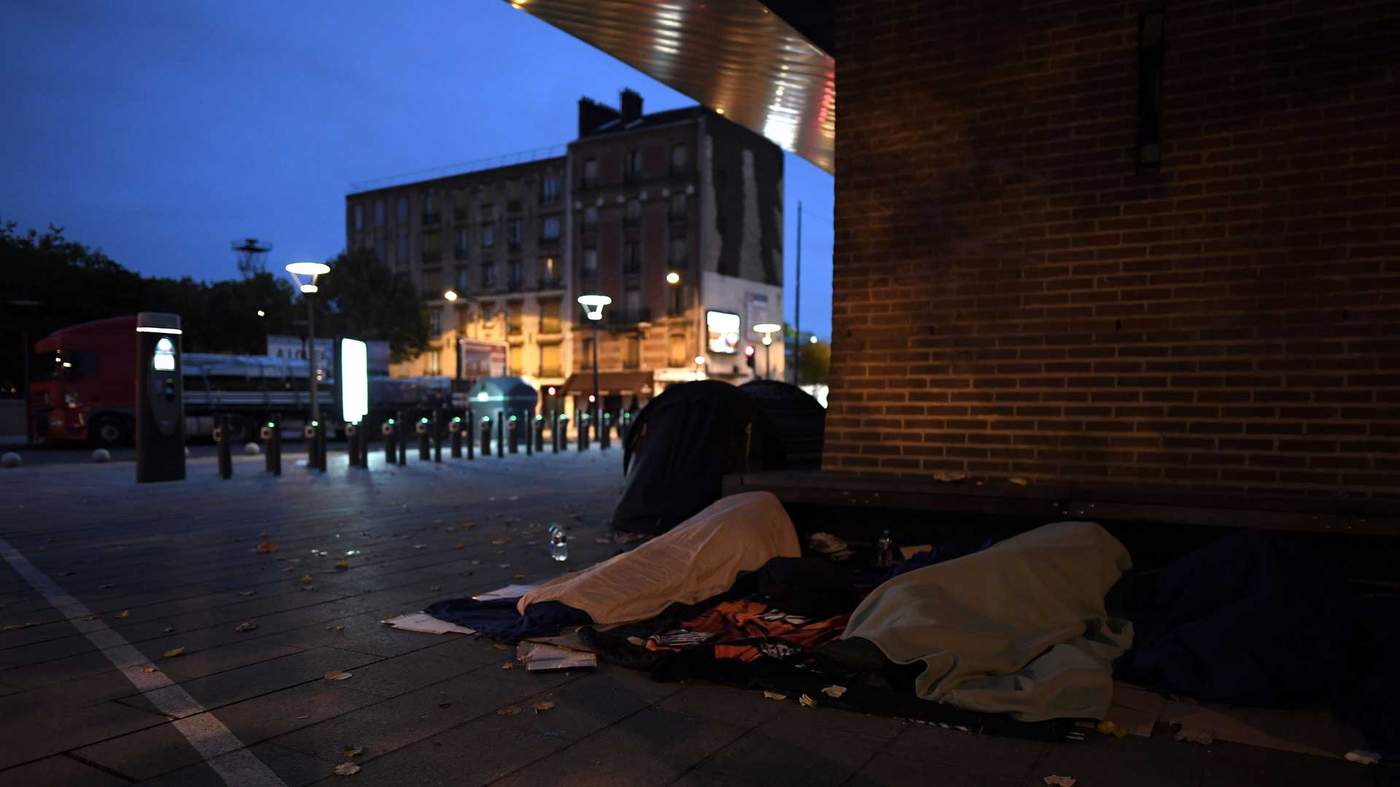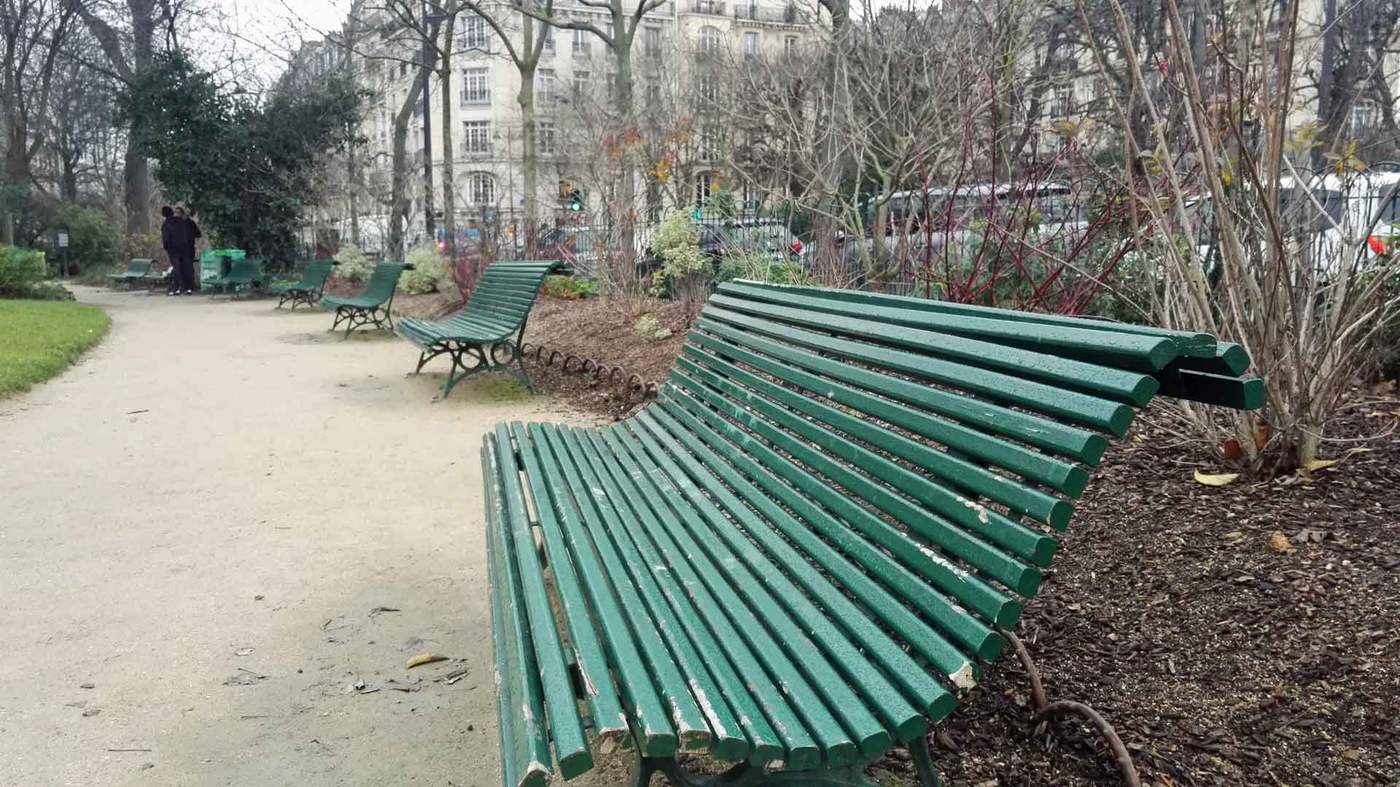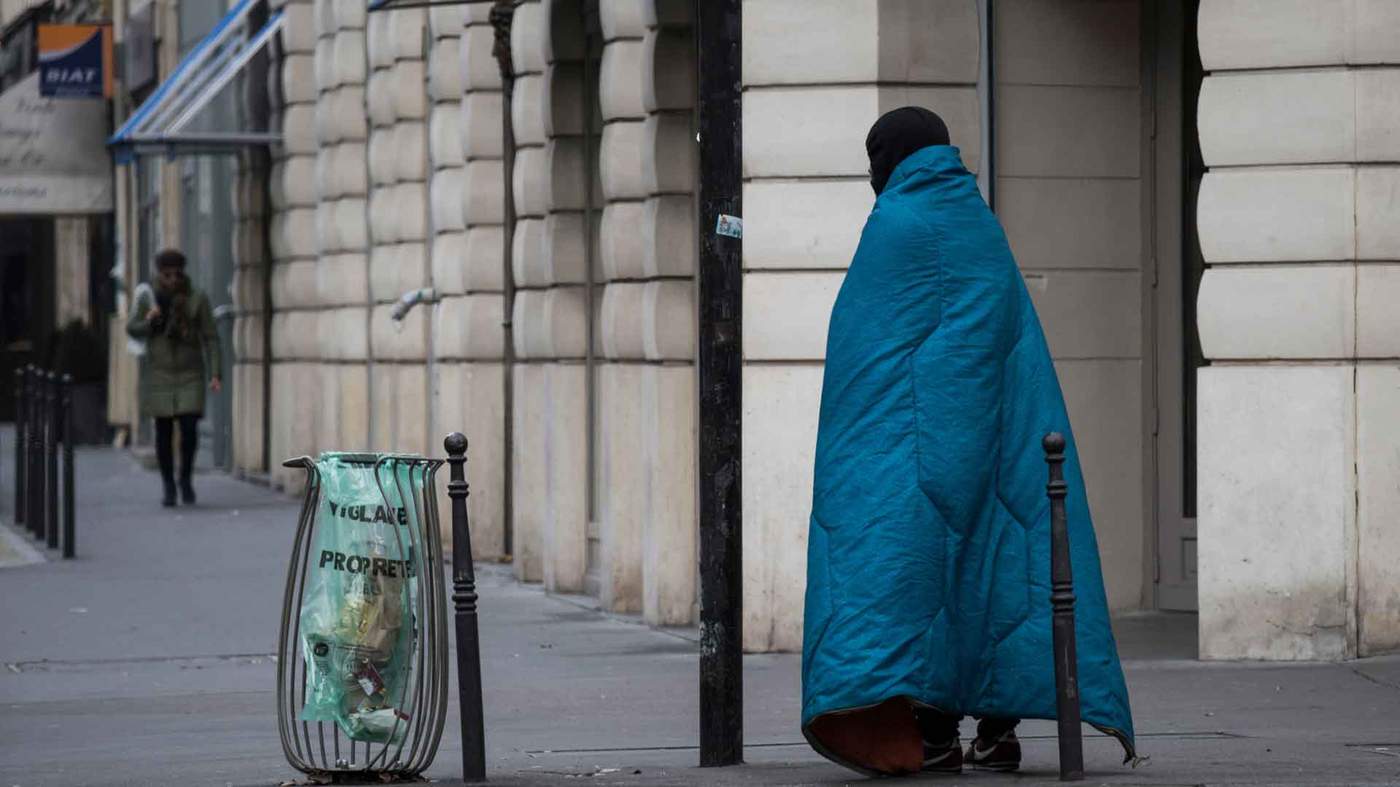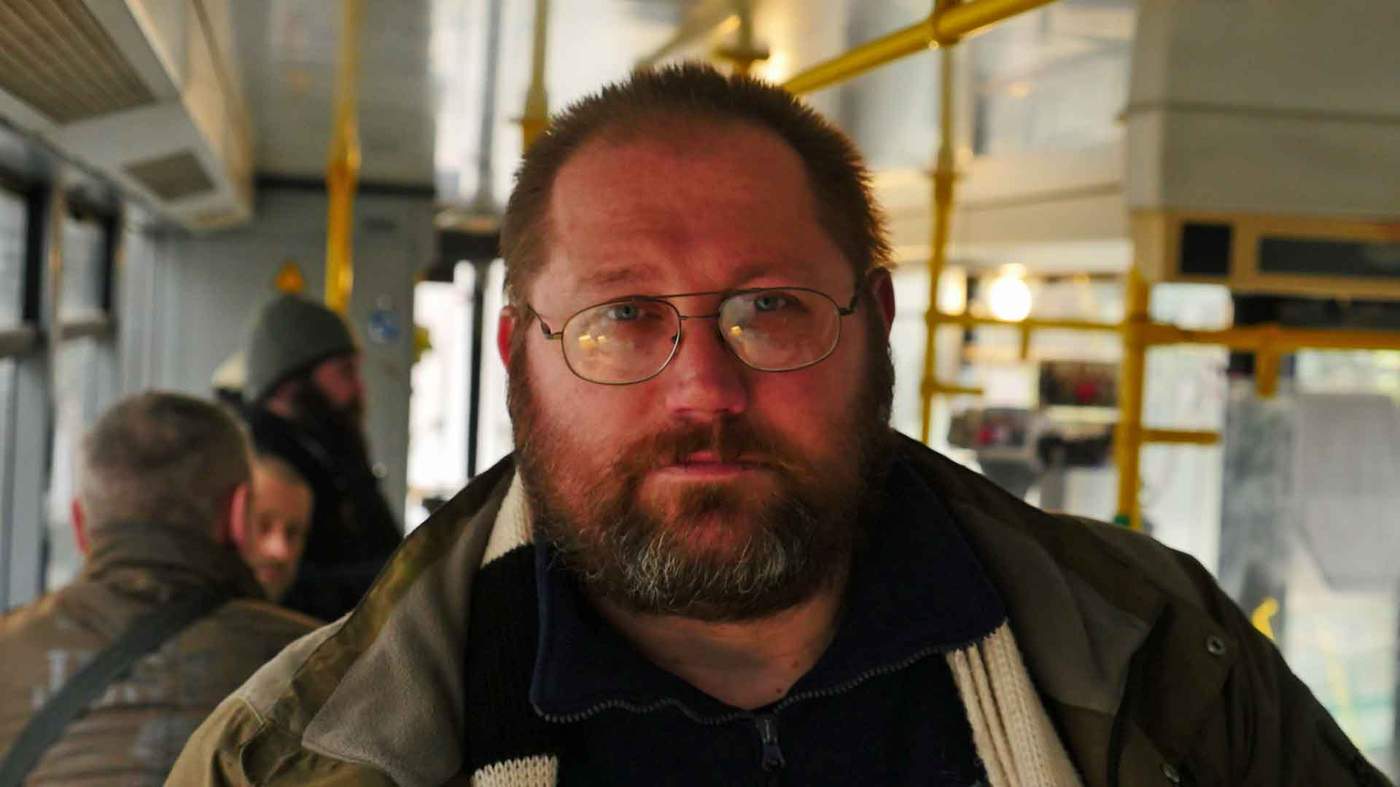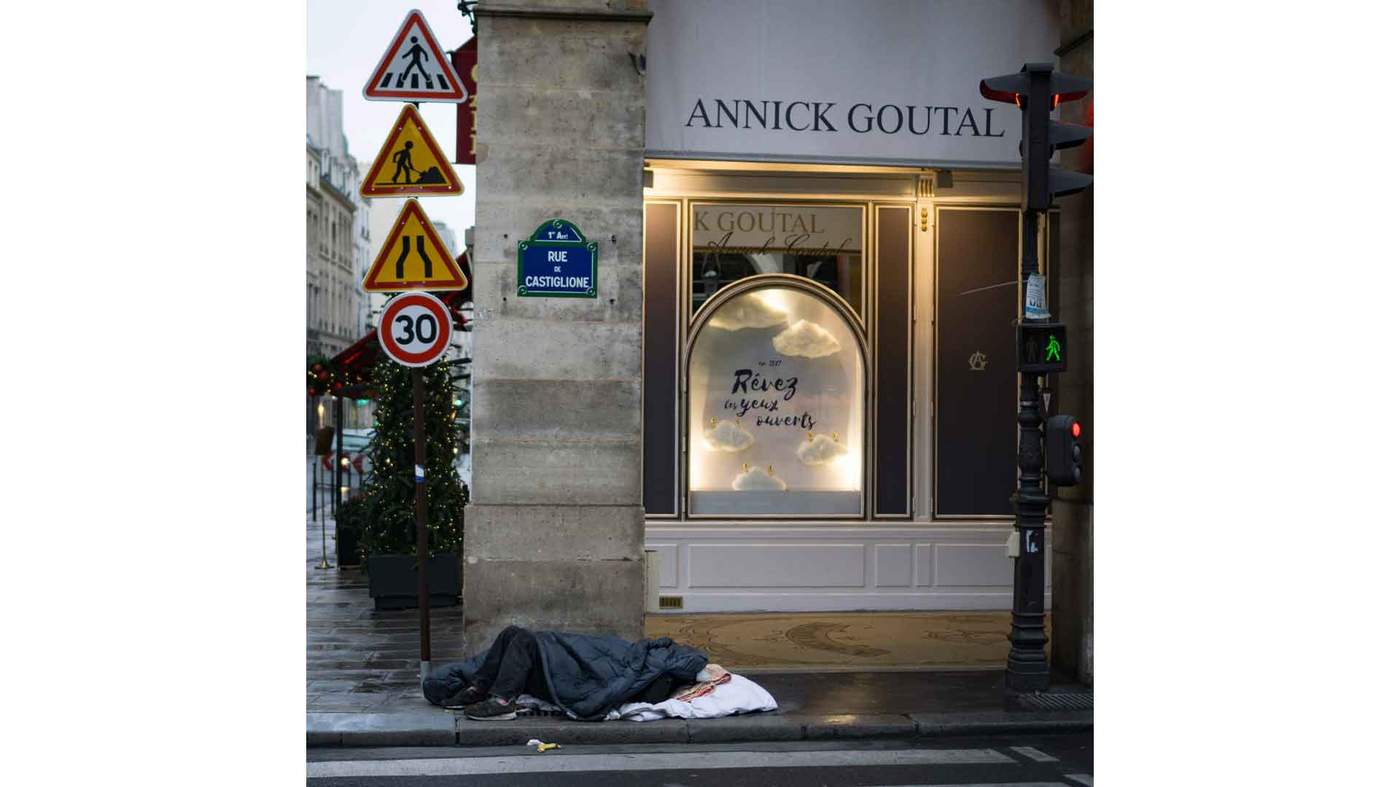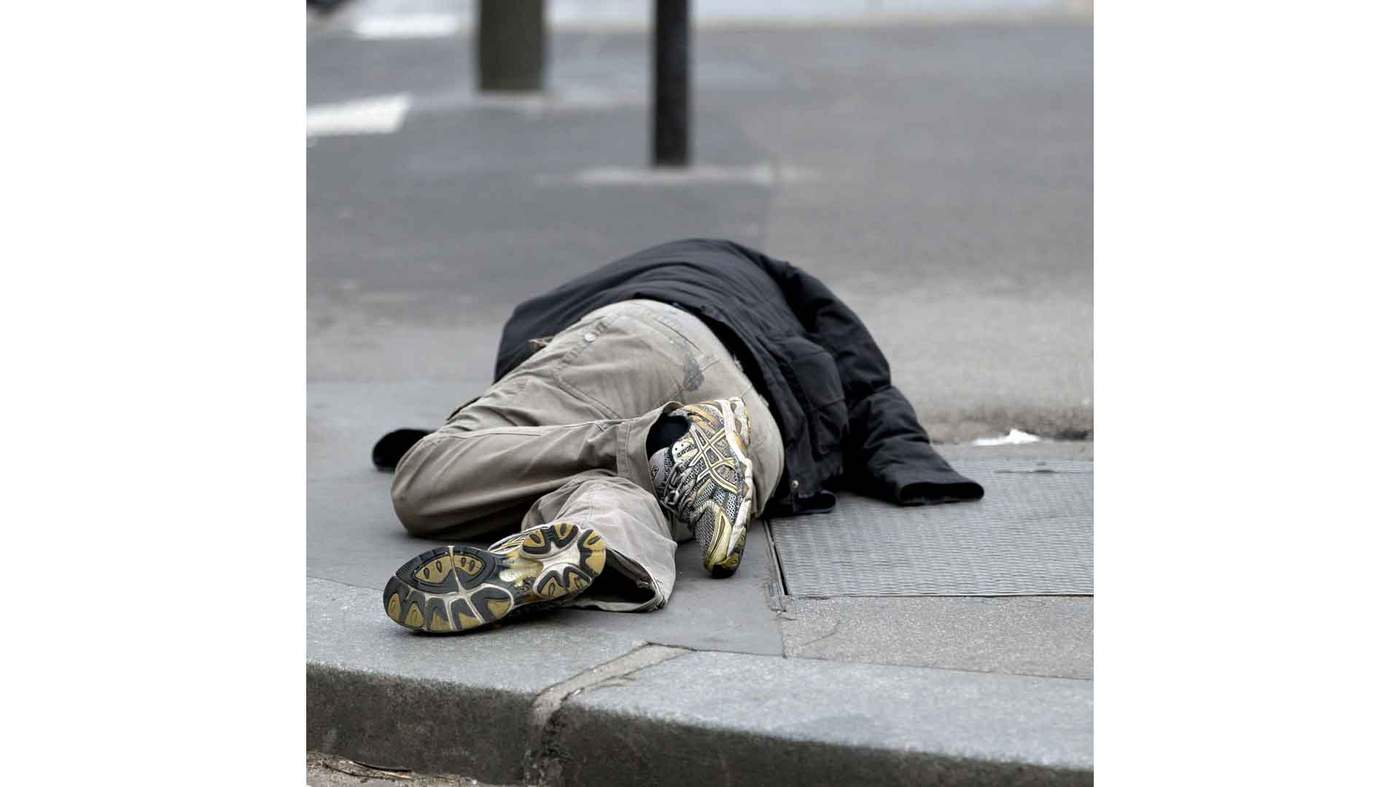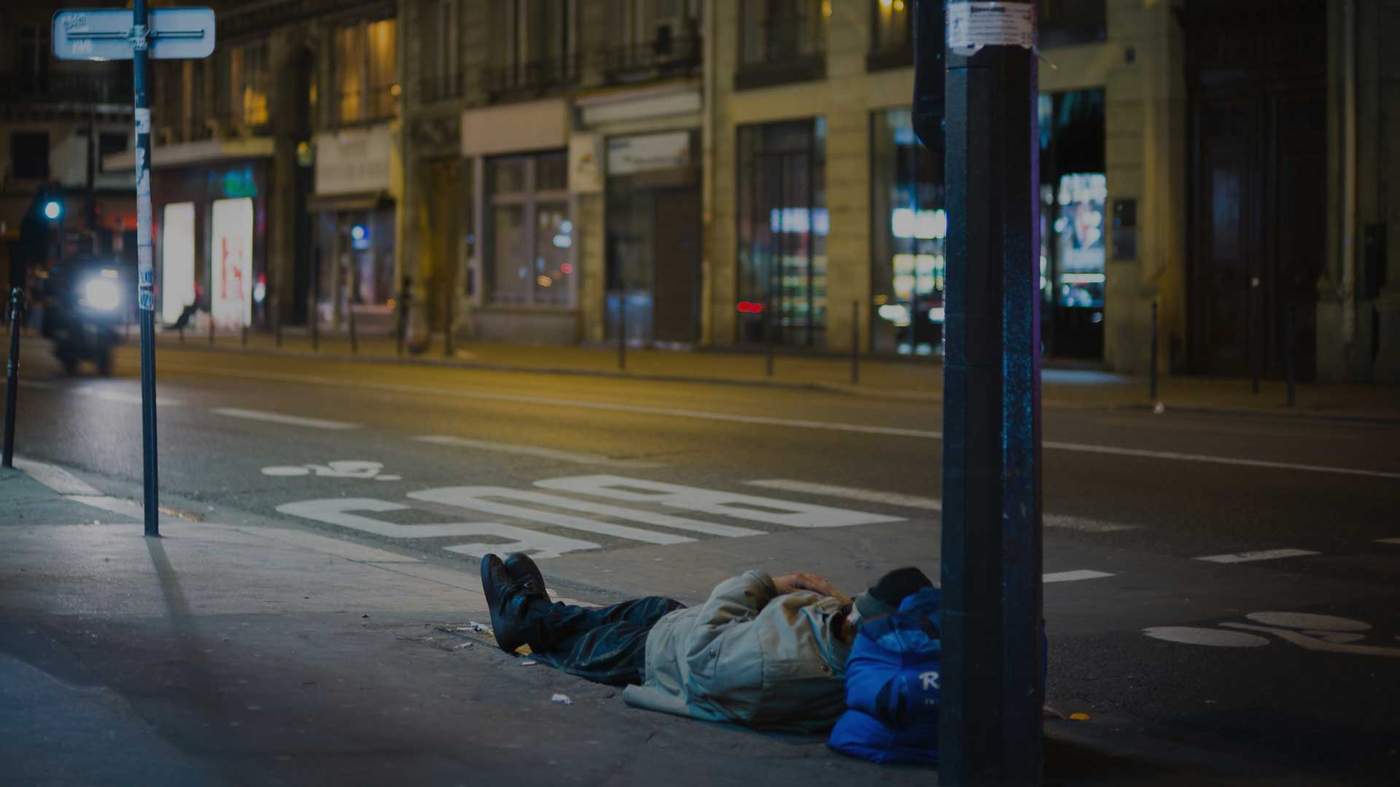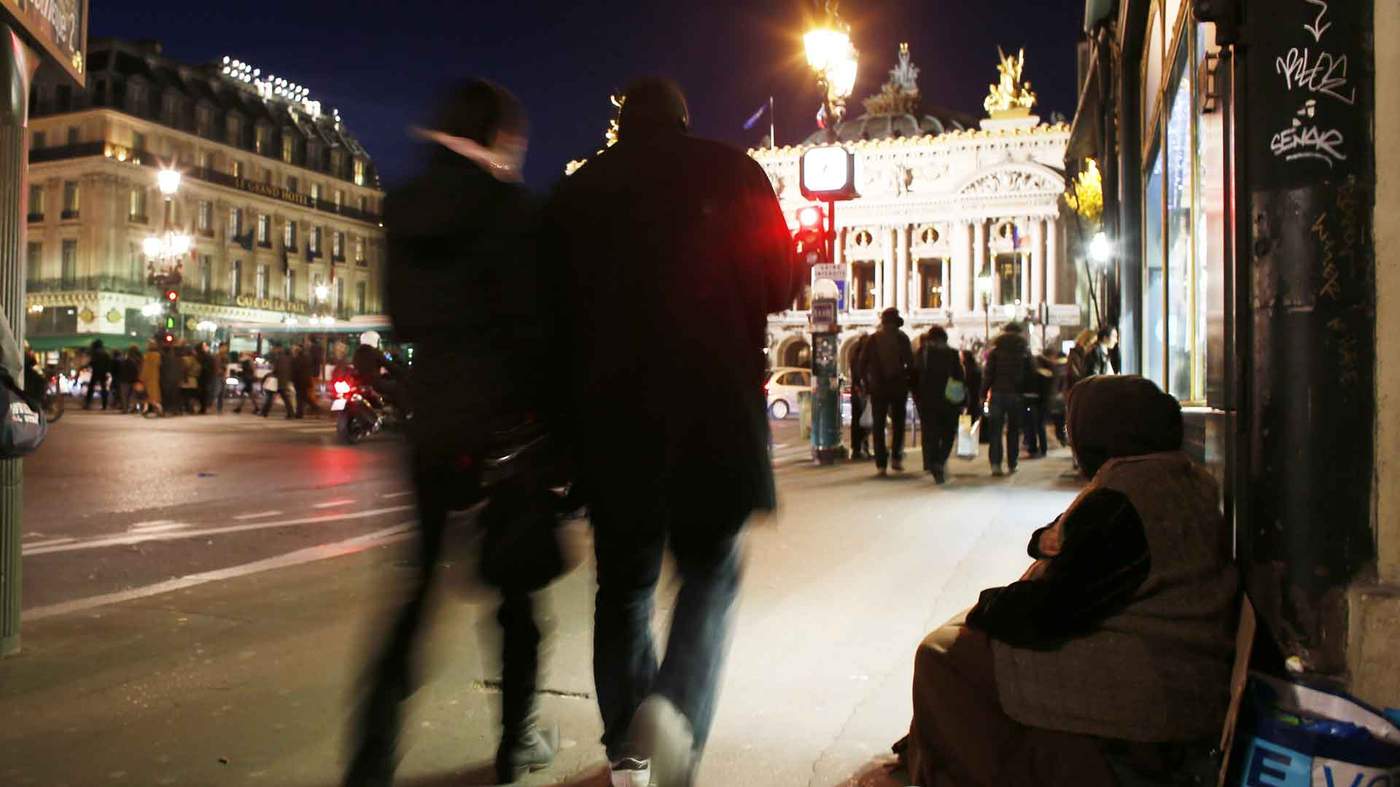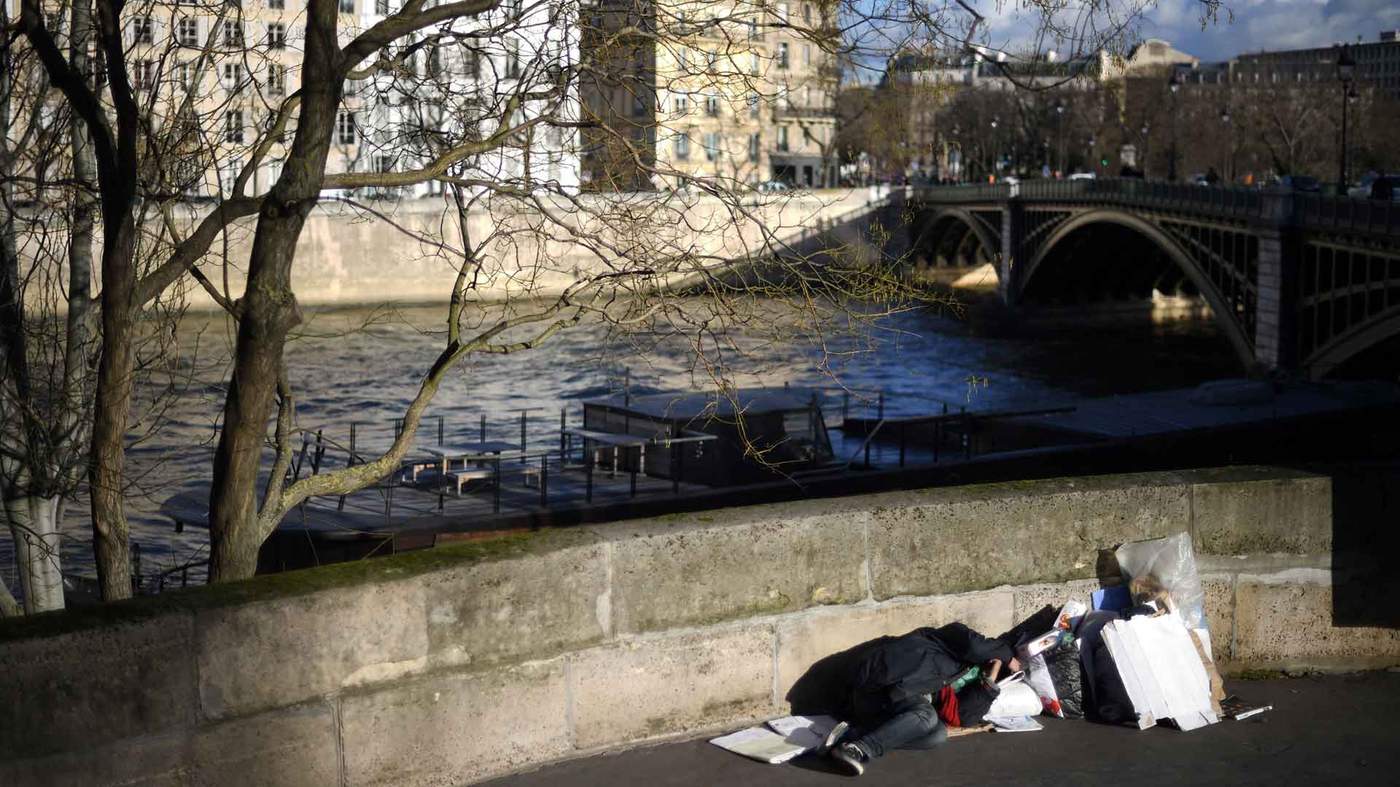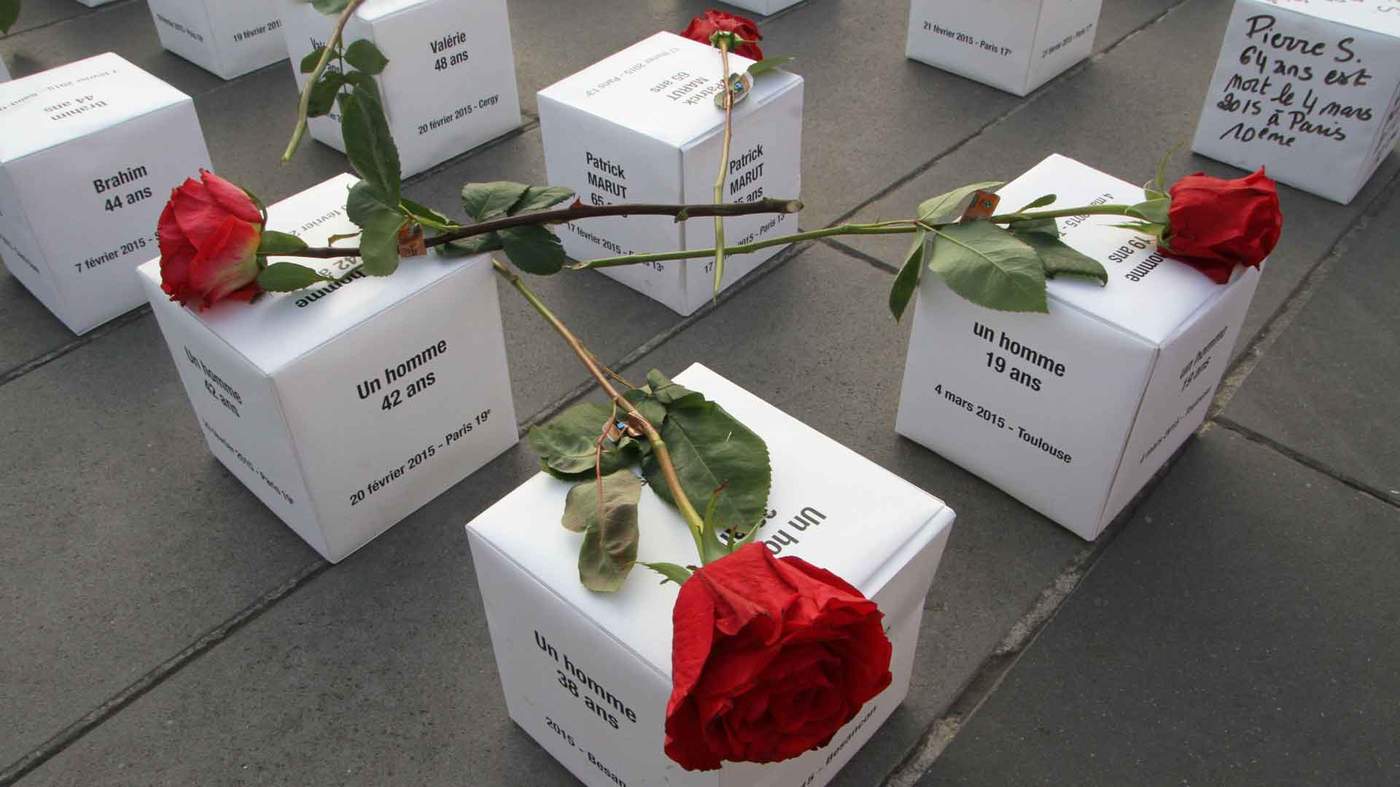They are short, brutal tributes.
Darius, who “livened the area” around rue Lafitte, and was dead at the age of 43.
Or Pierre, “found by a local resident, near the bins in rue Jacques Kellner”.
Or Michel, who died on 21 January in rue Matignon, “in a parking lot where he lived for 20 years”.
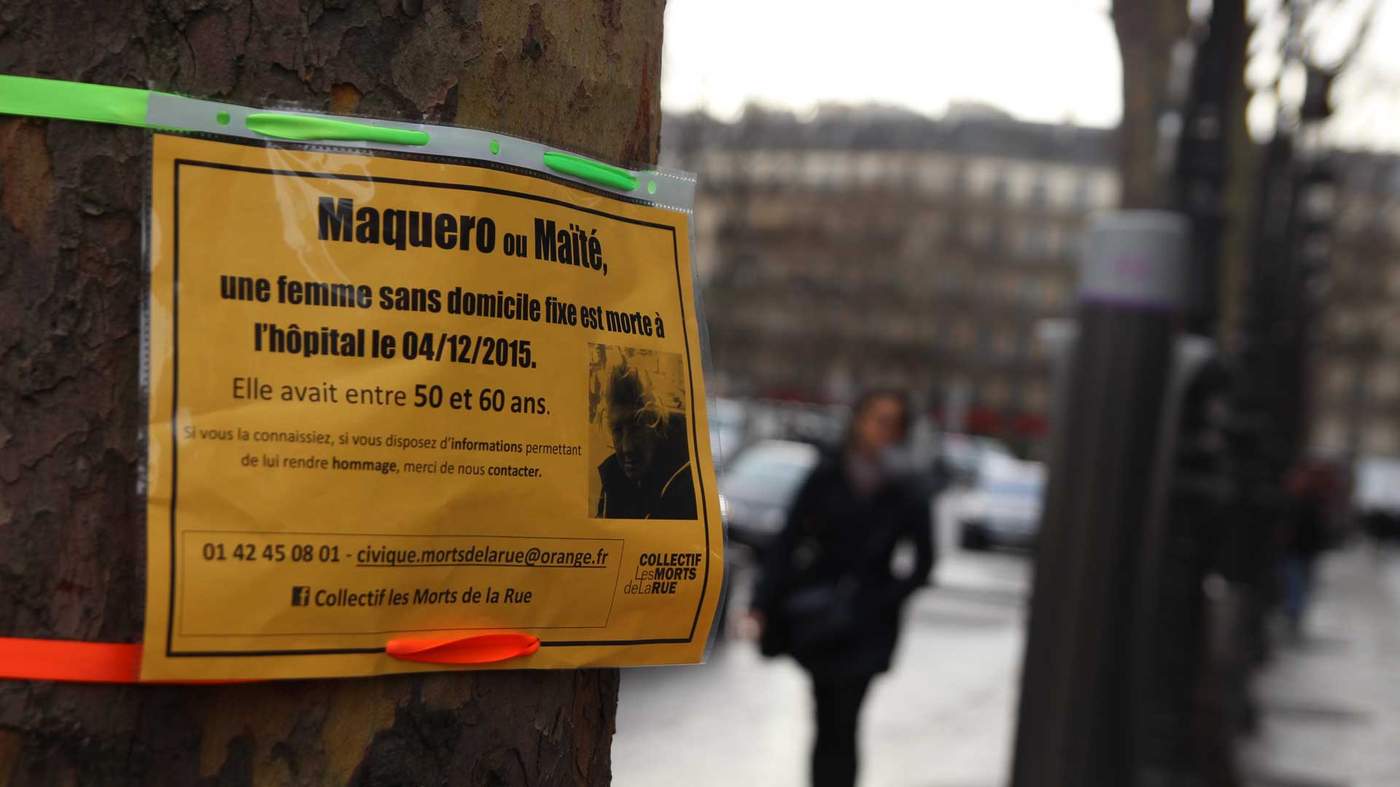
These curt memorials, posted on the website of a small charity, are pulled together from the sparse details and thin slivers of memory passed on by local shopkeepers, social workers, park attendants - anyone who might remember something about the men and women who lived and died on the streets of France.
Sometimes the details are so few that the dead are honoured without even names or ages. Their time and place of death are carefully posted along with a photo or video of their neighbourhood spot - an attempt to remember a life, when even its most basic information is forgotten.
These investigations are carried out by the Collectif les Morts de la Rue. Their work catches the eye in the noisy, fume-ridden streets of Paris - a bright, plastic-covered notice tied to a tree or a wall, sometimes giving a name, but ending always with the same request: “If you knew this person, or have information which would allow us to pay homage, please contact us.”
That might have been Tango’s story. Few in Paris’s tranquil 14th arrondissement would have known much about him - to many, he was just a man in his 50s, who slept in a park, with a friendly disposition and an alcohol problem.
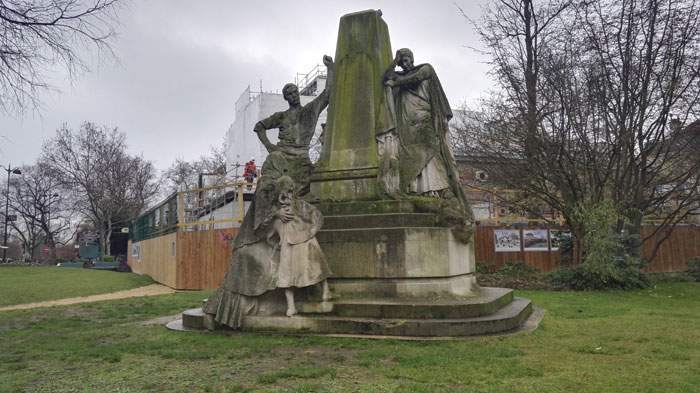
The park in Paris's 14th arrondissement where Tango slept
But two years after his death, Tango is still remembered in the place he once inhabited - even by those who arrived there long after he’d gone, and even though his body is buried 2,000 miles from France.
Clement Etienne runs a cafe in a quiet street not far from Tango’s park. The doors open promptly at 08:00 most mornings and there’s often a queue for the coffee machine. Unlike most cafes, the windows of this one are carefully painted over to provide privacy - you can eat, drink and even sleep there for free, and the whole operation is housed in a retired double-decker bus. It’s part of a project by the organisation Enfants du Canal to combat the exclusion of homeless people in Paris.
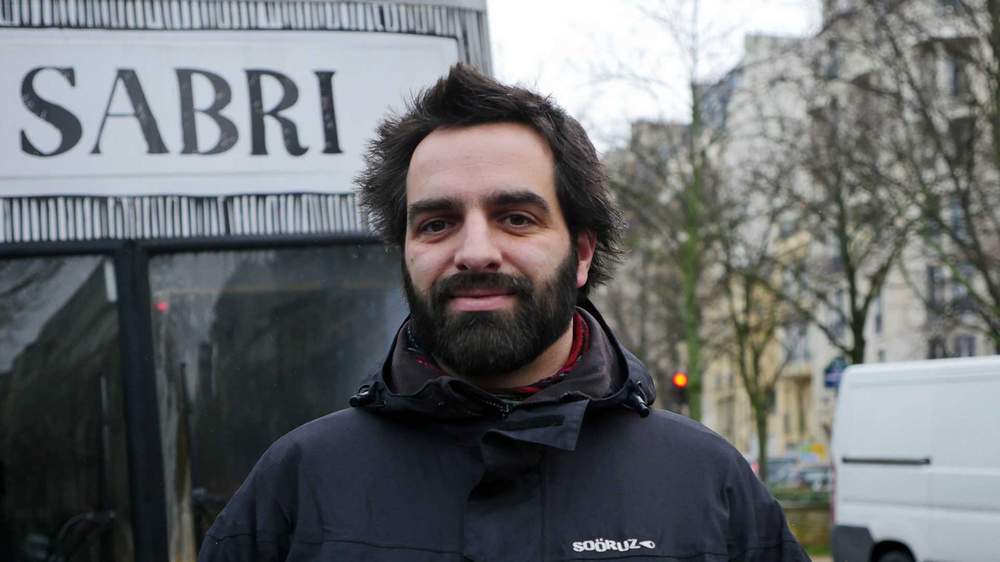
Clement Etienne runs a cafe for homeless people in a double-decker bus
Tango had been living on the streets for 20 years when he first met Clement, and was already a local fixture - known throughout the area only by his nickname. He almost never told people his real name, says Clement. “He was too ashamed - worried that reports about his situation would get back to his family.”
For this article, too, we have concealed his real identity, and even his real nickname, at the request of those who worked with him.
“He was more victim than thug,” remembers Clement. “He drank a lot but he was adorable - always joking, he wouldn’t hurt a fly. He wasn’t a cultivated man, but he had a real sense of kindness.”
Slowly, over the years, as the two men got to know each other, Tango’s story began to emerge.
“He had a dream, that he would return to Morocco,” Clement says. “It was more of a fantasy, really - and I think he knew that deep inside.”
Tango had arrived in France illegally, 30 years before - a young man from France’s former North African colony following one of the many migrant trails towards Paris.
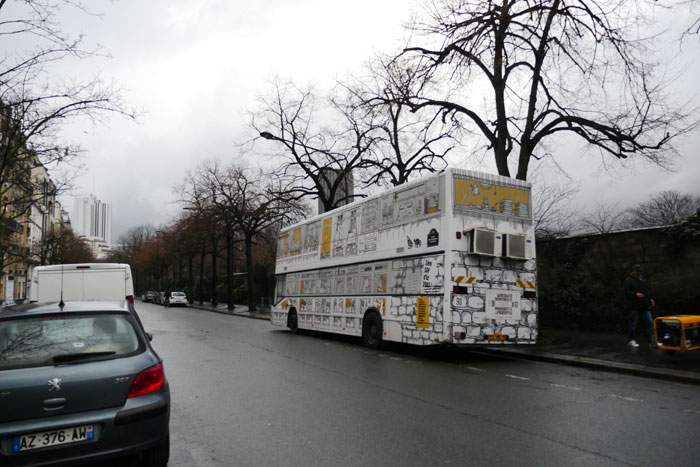
Back in the 1980s, as an illegal immigrant, Tango had no right to social housing in France, and rough sleeping was against the law.
But back then, Clement says, it was easy for even those who arrived illegally to get official papers. Tango secured French residency, found work in a factory, and began sending money home to Morocco.
He might have hoped that his story would end, decades later, with a comfortable old age and a peaceful death, supported by the structures of French society, and surrounded by close family and friends.
Instead, the end came on a bench in a city park.
A friend, sleeping nearby, woke one winter morning to find the middle-aged dreamer from Morocco coughing up blood. He called Clement for help. Tango died shortly after reaching hospital, from pulmonary embolism.
The Collectif les Morts de La Rue counted 501 deaths among rough sleepers across France in 2016 - the year that Tango died. Other activists believe the real number is several thousand.
The organisation holds a memorial for them each year in a central Paris square. The details of each known individual are marked on simple white cards and arranged alongside potted flowers, on AstroTurf laid out in the shapes of graves.
Each one of their sparsely told stories sheds light on one of Europe’s most intractable problems.
This is Tango’s.
For the first decade of his life in France, Tango wasn’t homeless. By day, he worked in the factory alongside dozens of other men just like him - by night he shared overcrowded living quarters with them.
It’s a pattern familiar to many Moroccan men of his generation. The lack of a wife or children would have allowed him to send most of his earnings back home. But it also left him isolated.
“He would have been surrounded by people,” says Clement. “It’s a community, but it’s a community made up entirely of men, all the same age, from the same place, with the same illusions. They’re all together, but they’re isolated from the rest of society, so they’re precarious.”
In that situation, it takes little for the structures fall apart. In Tango’s case, says Clement, it was probably a combination of alcoholism and losing his job. One may well have prompted the other.
Ten years after he arrived in France, Tango entered a new kind of social isolation - living on its streets.
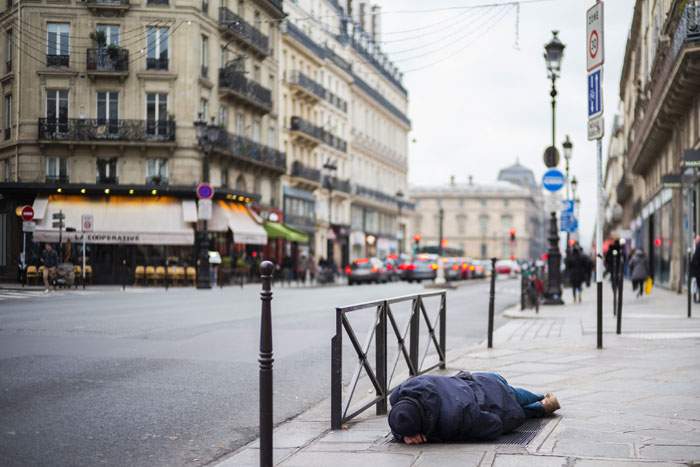
It’s often difficult to pinpoint a single trigger for homelessness. The French talk about a “rupture” - of health, of relationships, of work or rental contracts - that leads someone down the path to living on the streets.
One of the homeless people who currently uses the ShelterBus puts the date of his own “rupture” as 6 May 1991 - the day his mother died without sorting out the right documents for their living quarters. But for many others the slide towards homelessness is slower, more blurred - a gradual fall through social safety nets that fail, or are simply not there.
Bruno is another of the regulars at Clement’s ShelterBus, and at first glance could pass for someone living in regular accommodation. He stands tall and broad, and looks very clean, with an undamaged pair of glasses. He has been on the streets for the past four months, after losing first his job, and then his benefit payments.
“There’s a big problem with the way people look at you,” Bruno says. “They can see you are a bit lost. Because when you spend all day without doing anything, you go round and round in circles in your head - you get lost and people can see it in your eyes.”
For Gilou, another long-time customer at the bus, this month marks 28 years of living rough in Paris. He sits down to chat with his half-empty bottle of rose wine, which he has given the surreal nickname “Titine Rosenbach”.
“I worked in the building trade,” he says. “I was a painter, an iron-worker and a chef in a kitchen. I’ve done all kinds of things. It all stopped when I had a breakdown and ended up in the psychiatric hospital, then in prison. I’ve been in prison 14 times.”
He shows me his tattoos, which include a series of hyphens around his wrist to indicate a thief, and a symbol meaning “death to the police”.
The most difficult part of being on the streets is finding lunch, he says. “Dinner is fine, because if I’ve done a good day’s begging, I always have some food.”
He pulls out three pieces of cheese he’s been given from a nearby fromagerie.
“I beg three times a week in the marketplace here. All the shopkeepers know me, and they like me. The neighbourhood is really nice. But sometimes people are cold, and sometimes residents accuse me of peeing, though it’s not true.”
Atittudes towards homeless people in France are complex. There are plenty of people who view them as a nuisance - an unsightly disturbance bringing down property prices, relying on hand-outs, and posing a vague, unformed threat.
The French believe homelessness is a structural issue... British people believe more that it comes from individual responsibility and addiction”
But Prof Julien Damon, from the prestigious university, Sciences-Po, believes Paris is more tolerant and welcoming than London, for example.
“The French believe homelessness is a structural issue - it’s about unemployment, the housing market - that the individuals are not responsible for their situation. British people believe more that it comes from individual responsibility and addiction.”
When British people were asked about their views of homeless people by the polling agency YouGov four years ago, the biggest group (35%) said they believed that homeless people had “probably made bad choices in life that got them into their situation”.
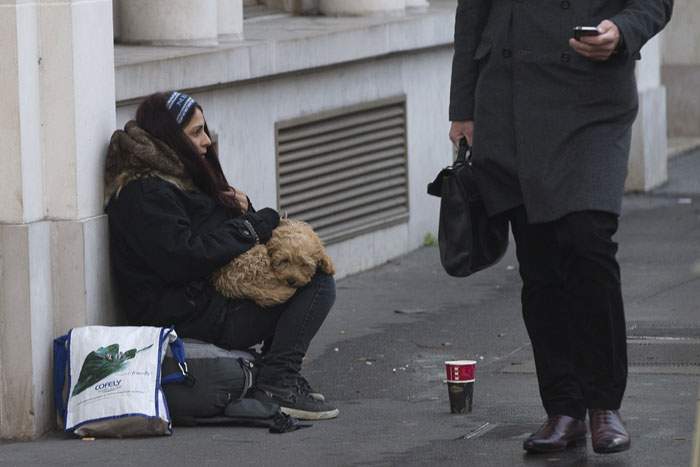
In contrast, a 2009 survey in France by the polling agency CSA and one of the country’s main homelessness organisations found that the majority of those polled - almost two-thirds - thought that the state was primarily responsible for people ending up living in the streets, and that three-quarters felt solidarity with homeless people.
The French state has changed its approach to rough sleepers since Tango arrived here in the 1980s. In 1994, rough sleeping was decriminalised, and in 2007 a new law ruled that everyone sleeping on the streets had the right to be housed - even those who were in the country without permission.
France has the most extensive and comprehensive right to housing in the whole of the European Union, according to the EU’s federation of homelessness organisations, FEANTSA.
But many illegal immigrants avoid accessing homeless services, for fear of alerting the authorities to their status. And since last month, that risk is being extended to emergency shelters under a new policy introduced by Emmanuel Macron’s liberal government. The change requires shelters to provide details of all those sleeping under their roof - allowing government officers to find and deport those who don’t have the right to be in France.
The policy is sparking stiff resistance from homelessness organisations in France, but most of them are wholly funded by the state, and there’s a big question over whether they will win the argument.
Across the Channel, the British government has also targeted some foreigners found sleeping rough. In 2016, it began a policy of deporting EU nationals found sleeping out on Britain’s streets, saying that rough sleeping was an abuse of EU freedom of movement rights.
It was a policy Chloe Serme-Morin, from FEANTSA, said “criminalised migrants sleeping rough”. And in December 2017, the High Court agreed that it was discriminatory and unlawful, after two Polish men and a Latvian challenged the government in court. The UK has now ended the deportations.
On both sides of the Channel there is a complex patchwork of measures that draw criticism from homeless charities, but also those that are welcomed as big steps forward.
In Paris, the metro company, RATP, has developed a working alliance with the homeless organisation, Emmaus, running a dedicated rough sleeping shelter and team of staff to monitor rough sleepers in and around its stations.
But despite legal protections, solidarity from individuals, and care by transport officials, rough sleepers in Paris could be forgiven for feeling increasingly unwelcome.
But many London shelters also have strict rules on alcohol, pets, or smoking. A quick study of the 28 emergency night shelters available across the British capital reveal that 26 of them banned alcohol. Tango might not have found himself any better off across the Channel.
And even those who meet hostel criteria can struggle to find a bed. A national emergency helpline, set up in France to link rough sleepers with shelters, is often inundated with calls and many of those who do get through are told there are no spaces left.
This winter, the French media ran a series of reports on the desperate advice rough sleepers were being given by the hotline - to try to sleep on night-buses, park benches, or on mattresses being laid out by some hospital A&E departments.
Bruno lived rough for a short while 10 years ago, and says the situation was completely different then. “It was nothing compared to today,” he says. “Back then, there were many more places in homeless shelters, and far fewer people on the streets. The economic situation was different then, and all the refugees weren’t here.”
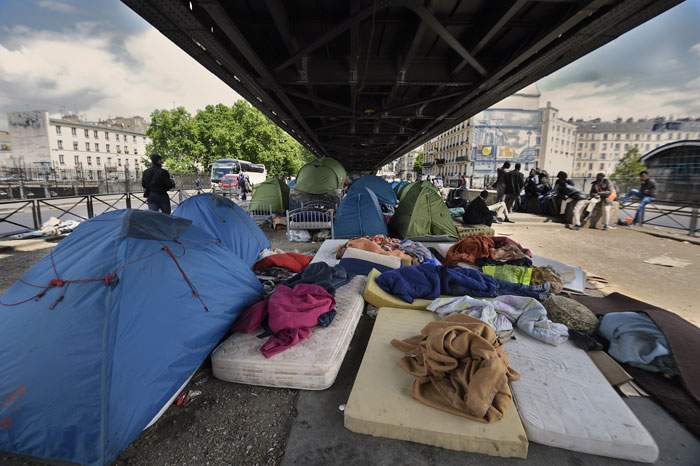
Gauging accurately the number of people sleeping rough on the streets of Paris has proved very difficult - estimates range between 7,000-8,000. But in 2014 the French Bureau of Statistics said the number of homeless adults in the much wider Paris Metropolitan Area had risen by 84% in about a decade.
Some of that rise is thought to be a result of the 2008 financial crisis, but the expansion of the EU also brought in new populations to the capital’s streets, and the large numbers of migrants crossing the Mediterranean into Europe have added to those numbers again.
And, says Chloe Serme-Morin, Paris has seen new groups of rough sleepers appearing.
"Families and young people are more and more represented among rough sleepers and in shelters,” she says.
“That's really because of rising housing costs - especially rent - and austerity policies which mean economically fragile families are unable to afford housing.”
With pressure continuing to grow, says Serme-Morin, shelters are not the whole solution.
“There’s been a real shift in attitude following the change to the law in 2007 - it’s starting to realise that the solution is long-term housing, and to think about Housing First.”
Housing First is a model from Finland that turns on its head the traditional approach towards homelessness that trapped Tango and others like him.
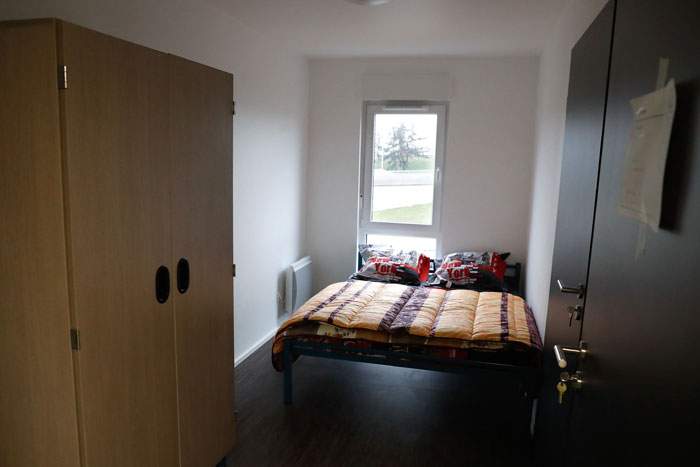
Inside an emergency homeless accommodation centre in Paris
“Previously, it was: sort out your addictions and psychiatric problems first, then we’ll give you temporary accommodation to see if you can handle it, and then if you’re ready, you’ll get permanent accommodation,” explains Serme-Morin. “Housing First means long-term housing is a precondition for sorting out everything else.”
The real sticking point is a lack of social housing stock.
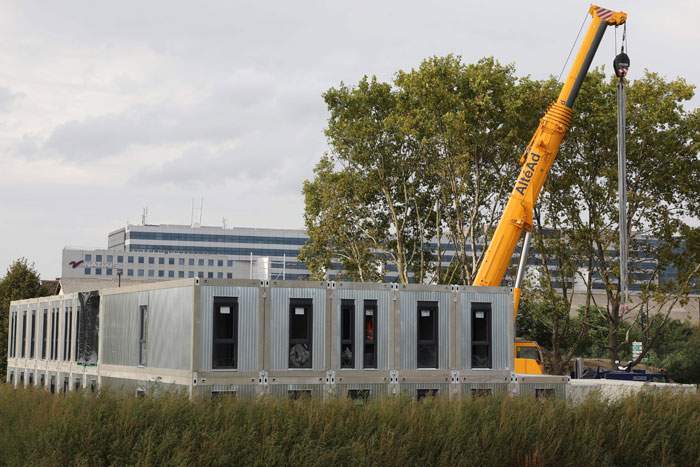
An emergency accommodation centre for homeless people, under construction in Paris
Eric Constantin, of Fondation Abbe Pierre, says that to solve the problem in the Ile-de-France region around Paris, 70,000 homes need to be built each year from 2010-2030, with half of these set aside for social housing. So far, that target has gone unmet for all but one year.
Almost three-quarters of residents in the Ile-de-France region qualify for social housing, he says. “The French model is unique, but now it’s under threat, because the government thinks it should start to focus on the poorest of the poor - which is London’s approach.”
A long-term home, without conditions attached, might well have been the key to getting Tango off the streets, but it would have meant Paris having enough social housing to go around.
As it is, he chose to sleep on a bench in a Paris park, drinking away his days while dreaming of rebuilding his life.
Tango’s memorial took place on a winter morning, in the park where he had lived.
“We’d put up notices all around the neighbourhood,” Clement says. “Around 15 people showed up: social workers, park attendants, nearby shopkeepers, his friends from the street. They had put a mattress on the ground and arranged candles and flowers all around it, along with his belongings - and some bottles of alcohol.”
Clement began the secular ceremony, talking about the man he had known. Others followed, sharing their stories. “Tango was very sociable,” he says. “Most people on the street die alone.”
“There was another homeless man who died recently at a street corner just up the road,” he says. “The local residents had been hostile, often calling the town hall to get rid of him. I wouldn’t go so far as to say they were happy when he died, but…”
Deaths like this can be sudden, and next of kin hard to trace. Until about 15 years ago, if no family could be traced, homeless people who died in Paris were buried by the municipality in a communal grave. “That’s still what many people in the street think will happen to them,” says Clement.
But organisations like his, and the Collectif Les Morts, now take over the process, organising simple ceremonies in a dedicated corner of the Thiais Cemetery outside Paris. The area set aside for homeless burials is called the Carré de Fraternité - the Corner of Brotherhood.
In Tango’s case, though, there was someone in his life.
“There was a niece,” Clement says. “Tango talked about her a lot, and had given me her number. I told her about the memorial, and she said she would come. She sent lots of texts leading up to it, but she never appeared. I think it was too difficult for her to confront what he had been through.”
Instead, she stepped in to take charge of her uncle’s body. Three decades after he had arrived in France full of hope for a brighter life, Tango’s body was repatriated to Morocco for burial.
After 20 years spent dreaming of returning home, finally, he did.
